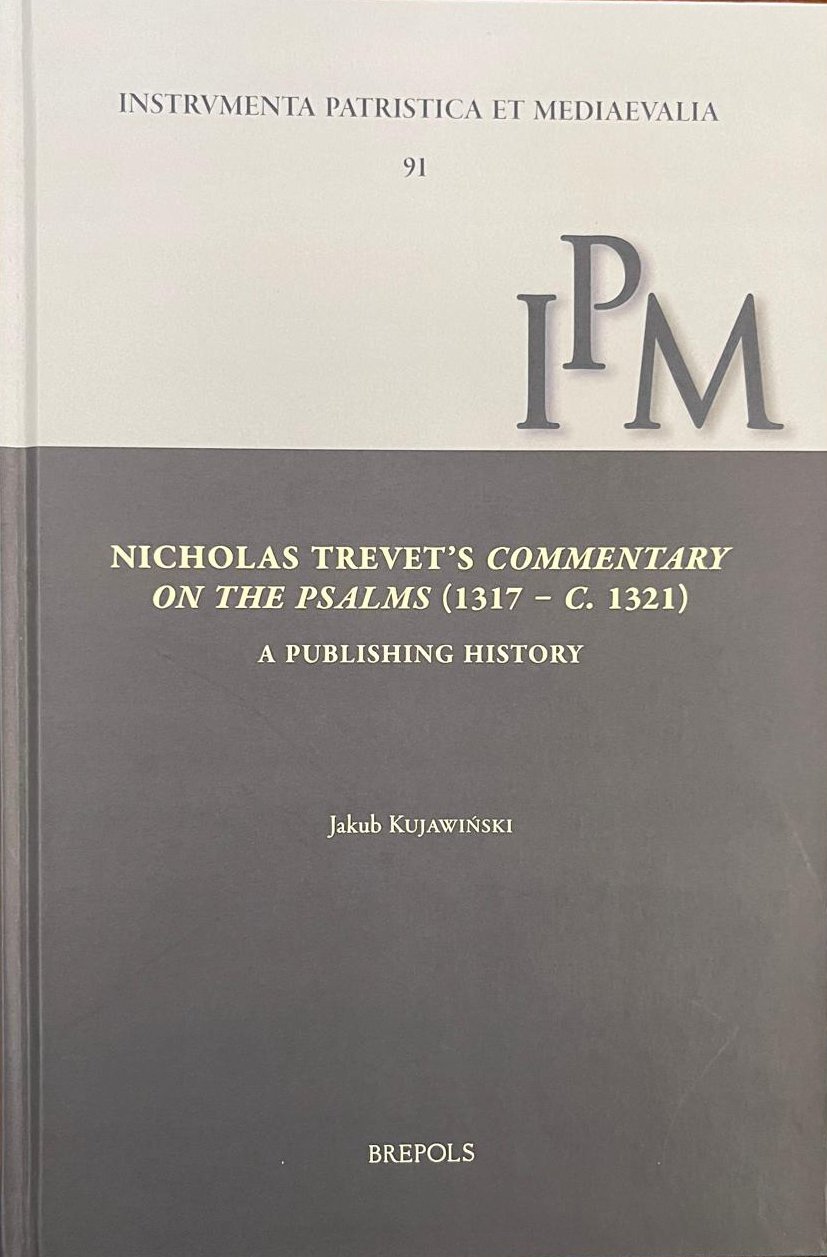From Oxford to Rome, via Naples: the vicissitudes of a copy of Nicholas Trevet’s commentary on the Psalms
Jakub Kujawiński
Department of Medieval History
Faculty of History
Adam Mickiewicz University, Poznań
The Archive of the Venerable English College treasures a precious relic of both English Biblical studies and continental book heritage of the late Middle Ages. Liber 1670, a parchment manuscript of 131 folios, transmits the commentary on the Psalms by Oxford Dominican Nicholas Trevet (c.1258–after 1334), which is copied here together with the Psalter.
Trevet’s work, which has never been published in print, was composed between 1317 and c.1321 and offers a literal exposition of Jerome’s Latin translation of the Psalter made from Hebrew (iuxta Hebraeos). It was unusual choice at the time, since most of medieval exegetes commented on the Gallican Psalter.
The manuscript is one of the nine early copies of Trevet’s work produced in the decades following the publication of the commentary and is among five in which Psalm 150 is illustrated with representations of musical instruments. Together with other four copies, it witnesses to the authorial reworking of the commentary shortly after the publication.
A partial collation of the nine fourteenth-century copies proves a close relationship between Liber 1670 and an English manuscript, now in the Vatican Library (Barb. lat. 730). Most probably they were copied from a common exemplar, now lost. Liber 1670 was made on the continent around the middle of the fourteenth century, but the precise time and place are difficult to ascertain. The decoration is limited to initials provided with pen-flourishes in Italian style hence, if not entirely copied there, it may have been finished (decorated) in Italy, perhaps in Naples.
Indeed, the four previously unnoticed ownership inscriptions in Gothic scripts, scattered throughout the manuscript, prove that in medieval period the book belonged to the Carthusian monastery of Saint Martin, the famous Certosa di San Martino, which still stands high above the city of Naples. It was founded in 1325 by Charles, duke of Calabria, from the Angevin dynasty ruling in Naples, and Liber 1670 may have belonged to the original nucleus of the library, established with royal support in the central decades of the fourteenth century.
It is worth stressing that only two other extant medieval manuscripts are known to bear ownership notes of this charterhouse (a few others can be associated with the monastery on other grounds). The late-fifteenth-century notes found in one of those, MS XXII. 127, in the National Library of Naples (fols. 3r, 102v, 251v), differ in wording and script from the best- preserved one in Liber 1670, inscribed in the lower margin of fol. 70r (the others are faded or erased). The VEC manuscript therefore enriches the range of documented forms of ownership inscriptions used in the charterhouse and, more importantly, adds a new item to the small body of manuscripts surviving from the medieval library of the Certosa.
AVCAU, Liber 1670, f.1r, showing, at the top, the ancient inscription denoting ownership of the manuscript by the English College in Rome, and, at the foot of the folio, an erased ownership note of the medieval library of the Certosa di San Martino near Naples. The number in red ink at the top is apparently contemporary to the Certosa’s ownership note.
The circumstances of the transfer of the book from the charterhouse to the College await further investigation. However, as Dr. Renaud Milazzo, keeper of the rare book collection at the VEC kindly confirms, the inscriptions referring to its belonging to the “Collegium Anglicanum in Urbe” (fol. 1r) and “Bibliotheca Communis” (front flyleaf verso) show that it must have arrived at the Venerable English College shortly after its foundation in 1579.
Although not a fine manuscript as judged by its material features, Liber 1670 is nevertheless of historical significance in a number of ways. As a witness to the authorial revision of the work, it needs to be taken into account by future editors of Trevet’s commentary. It demonstrates that work by an Oxford friar soon became available as far afield as southern Italy. It is a rare survivor of the medieval library of the Certosa di San Martino near Naples. Last, but far from least, the manuscript witnesses to the College’s early interest in the preservation of English pre-Reformation heritage.
AVCAU, Liber 1670, f.70r, showing the ancient inscription denoting ownership by the medieval library of the Certosa di San Martino near Naples
More on this manuscript and Trevet’s commentary can be found in my recent book, Nicholas Trevet’s Commentary on the Psalms (1317–c.1321): A Publishing History (Brepols 2023), which is available in an open access edition: https://www.brepolsonline.net/doi/epdf/10.1484/M.IPM-EB.5.131279 (the description of Liber 1670 on pp. 218–23, Plates 13 and 14).



